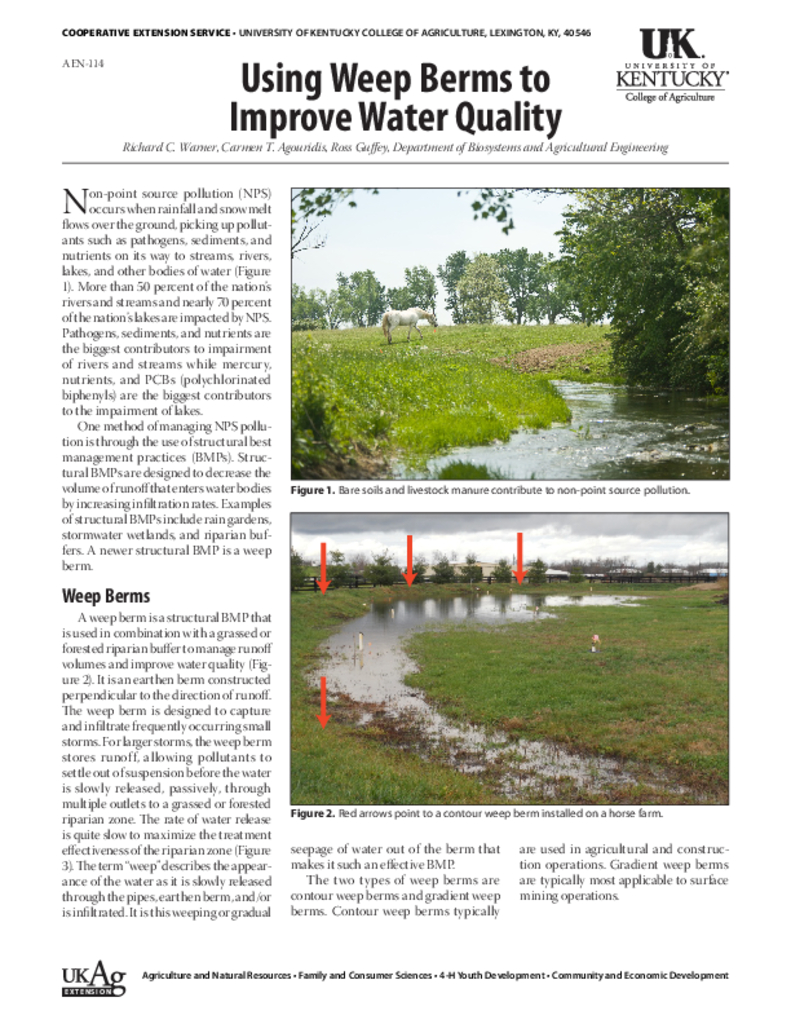Using Weep Berms to Improve Water Quality
Using Weep Berms to Improve Water Quality
Abstract
Non-point source pollution (NPS) occurs when rainfall and snowmelt flows over the ground, picking up pollutants such as pathogens, sediments, and nutrients on its way to streams, rivers, lakes, and other bodies of water. More than 50 percent of the nation's rivers and streams and nearly 70 percent of the nation's lakes are impacted by NPS. Pathogens, sediments, and nutrients are the biggest contributors to impairment of rivers and streams while mercury, nutrients, and PCBs (polychlorinated biphenyls) are the biggest contributors to the impairment of lakes. One method of managing NPS pollution is through the use of structural best management practices (BMPs). Structural BMPs are designed to decrease the volume of runoff that enters water bodies by increasing infiltration rates. Examples of structural BMPs include rain gardens, stormwater wetlands, and riparian buffers. A newer structural BMP is a weep berm.
Core Details
Publication Date
November 9, 2012
Categorical Details
© 2025 University of Kentucky, Martin-Gatton College of Agriculture, Food and Environment

